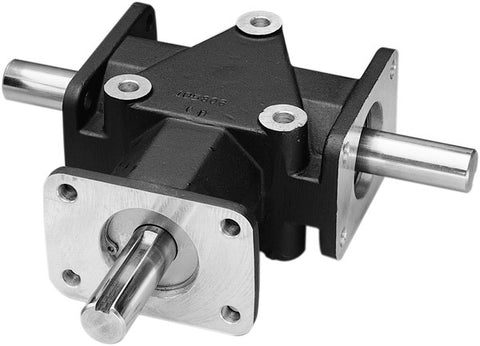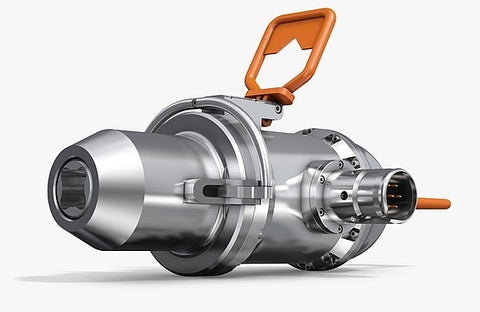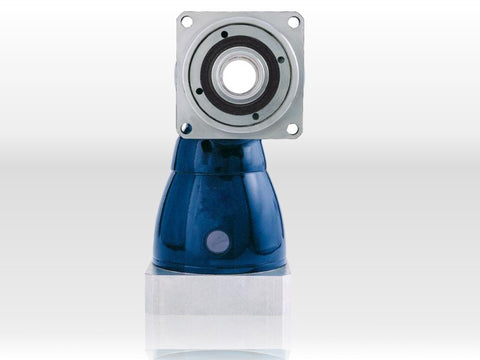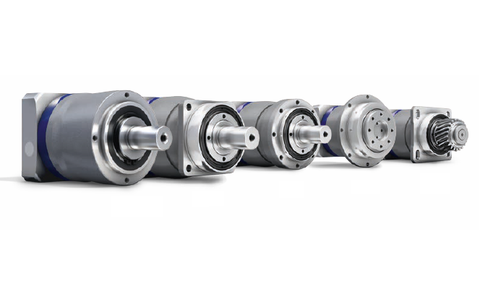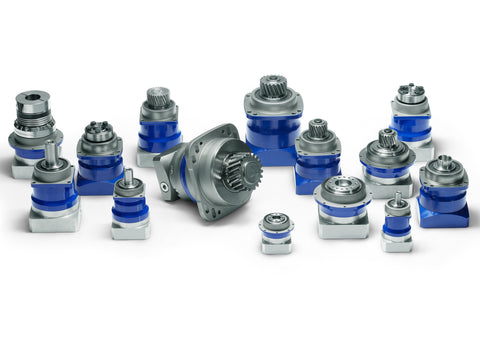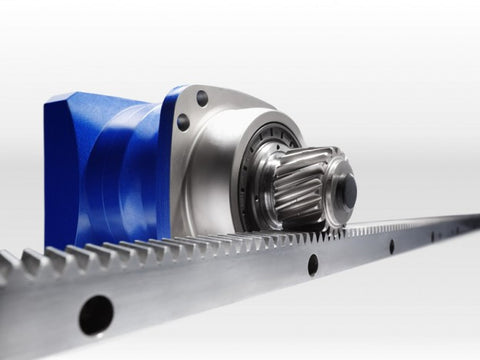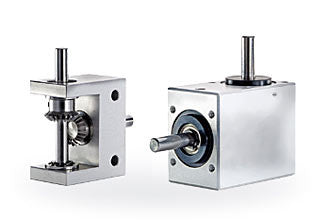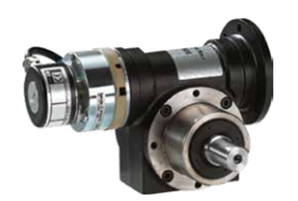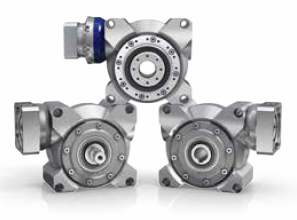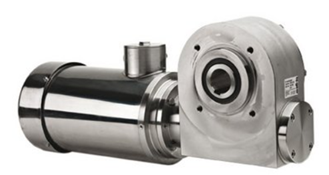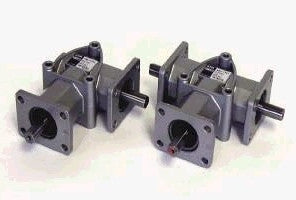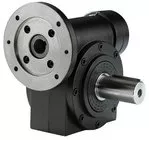Gearboxes
gearbox is a complex of mechanic parts which uses gears and gear trains to provide speed and torque conversions from a rotating power source to another device.Gearboxes can be straight or 90 degree angular.
Types of common gearboxes:
• Worm gearhead: a gearbox based on worn and wheel set providing high ratio and low backlash with high torsional rigidity and self locking.
• Planetary gearhead: is a gear system consisting of one or more outer gears, or planet gears, revolving about a central, or sun gear.
providing high ratio , low backlash, high efficiency and compact design.
• Hypoid gears resemble spiral bevel gears except the shaft axes do not intersect. The pitch surfaces appear conical but, to compensate for the offset shaft, are in fact hyperboloids of revolution.
• T gearbox: gearbox usually based on Bevel gears which its output side is splitted to both sides.
• Cycloidal gearbox: The input shaft drives an eccentric bearing that in turn drives the cycloidal disc in an eccentric, cycloidal motion. The perimeter of this disc is geared to a stationary ring gear and has a series of output shaft pins or rollers placed through the face of the disc. These output shaft pins directly drive the output shaft as the cycloidal disc rotates. The radial motion of the disc is not translated to the output shaft. – the disadvantages are high noise, strong vibrations, short lifespan, and low efficiency .
Showing items 1-19 of 19.




